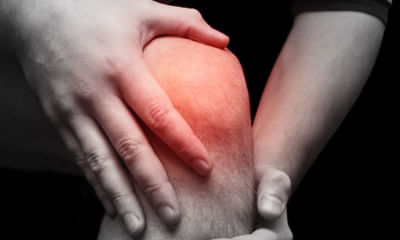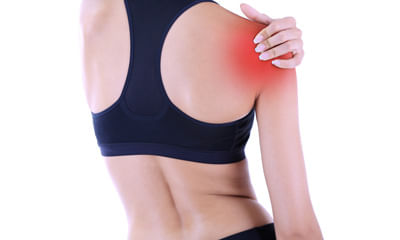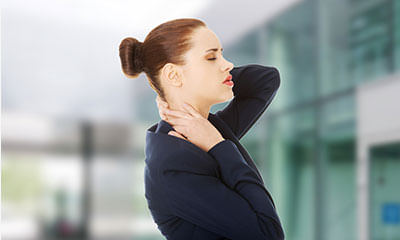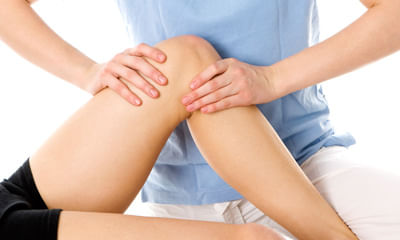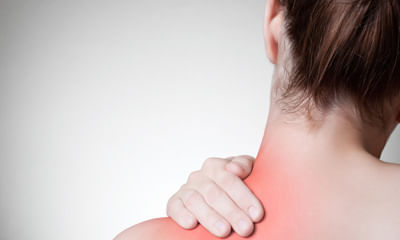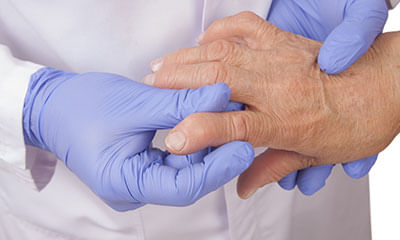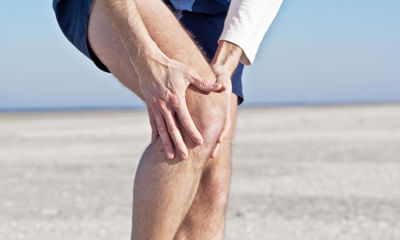Medicine For Kneecap Pain
While walking and bending my knee makes sound. My weight is 109 kg. Please suggest medicine as I am unable to do exercis ...
Ask Free Question
Often, crepitus is harmless. It happens when air seeps into the soft tissues around the joint (such as the kneecap). When you bend the joint, the air bubbles burst, and you hear a bone cracking sound. While most crepitus is harmless, some forms of crepitus signal a problem.
I am 40+ years old. I have pain in both the legs and nerves of legs are also visible and it starts paining a lot at nigh ...
Ask Free Question
Varicose vein compression wearing compression stockings is vital for preventing and treating varicose veins. They steadily squeeze your legs to help improve your circulation. They may also help to relieve pain, discomfort or swelling in your legs. Walking just walk more. It’s a great way to encourage blood circulation in your legs. Pedaling lie flat on your back. Place your hands out to your sides. If you prefer you can place them beneath your buttocks to prevent strain to the lower back. Lift your legs off the floor, and pedal them as if you were pedaling a bicycle. The more you elevate your legs, the more you will increase blood circulation. Leg lifts lie on your back with your hands beneath your buttocks. Keep your buttocks pressed down, and your lower back against the floor. Lift one leg at a time and hold in an elevated pose perpendicular to the floor until you feel the blood begin to flow back up from your feet, calves, and thighs. Repeat with your other leg. Alternately, you can raise both legs and rotate your ankles to further improve leg circulation. Knee bends with ankle flexion lie again on the floor on your back. Slowly pull one knee into your chest, holding onto your leg behind your knee (holding on top of the kneecap puts undue pressure on this delicate joint). Now, point and flex your foot several times. Do this slowly and forcefully – don’t let your foot flap around loosely, but rather tighten the muscles of the calves and the tendons around your ankle. Repeat with the opposite leg. The same measures to treat the discomfort from varicose veins can help prevent them: •watching your weight; •a high-fiber, low-salt diet; •avoiding high heels and tight hosiery; •elevating your legs; •avoid crossing your legs;
I am 80+ years old. My whole body parts pains from neck to toes. I get relief after applying jrumax oil. But after secs ...
Ask Free Question
Hi. Doing heath bath and doing isometrics excercise 20 times and use knee cap and for neck avoide pillow. Neck traction use 5 days. Take good food. Drink water yes use omini gel and spray. Get well soon.
Dear Dr. I am male age 48 years height 175 cm weight 80 kgs. Since 2014 I have been suffering from osteoarthritis leadin ...
Ask Free Question
Regards Lybrate user. I empathize your concern. One needs to understand about osteoarthritis to better be able to manage the disorder. Osteoarthritis refers to degeneration or wear and tear of the joint's cartilage (cushion system that is present over the bone). One needs to remember that this disorder, does not occur in few days. It occurs over long duration of months to years. As the wear and tear occurs, the joint undergoes multiple changes from inflammation (i.e swelling of joints) to getting unstable (moves too much without control - inside the joint, not externally) to getting completely stable (joint gets stiff and fixed, no movement gets possible). The healing process needs adequate rest and motion balanced. Too much rest or too much motion could cause progression. Also due to the degeneration, the muscles around the joint tend to adjust themselves differently and the forces on the joint changes. It needs to be modified appropriately to prevent the disorder from progressing. Joints primarily needs movement so the tissues within the joint could get nutrition and oxygen. Joints need appropriate loading and release of the load to be able to do so. One of a best task recommended is to walk as tolerated. You may consult an orthopaedic physiotherapist to develop a program of exercises, that might help you manage the disorder. Kneecap is a supporting structure that does the work of your muscles & provides stability, in lieu of your muscle work. So, it is recommended to use the orthosis wisely.
Sir my wife suffering with joint pains. Doctor expressed that her both knees degenerated completely and prescribed nurok ...
Ask Free Question
If the knees are completely degenerated, definitive treatment is only surgery all medication prescribed to you is mild, and helps patients with early arthritis only, so please don's spend too much on medicines alone. Focus instead on physiotherapy and weight control.
Hello doctor, my mother-in-law is around 55+age. From past 5months she is experiencing pain above elbow of left. When ha ...
Ask Free Question
It is called as rheumatic arthritis. If your pain is more in the distal joints, ie. In the upper limbs if the pain is present in the fingers/wrist and in the lower limbs it the pain is present in the toes/ ankle, then we shall definitely say it is rheumatic arthritis. Wear elbow brace and wrist brace which will make her to feel warm and that will make the joints become firm. Hot water fermentation will help knee cap will also help to prevent the damaged cartilages. If your pain is more in the distal joints, ie. In the upper limbs if the pain is present in the fingers/wrist and in the lower limbs it the pain is present in the toes/ ankle, then we shall definitely say it is rheumatic arthritis. Which joints you have pain? If your proximal joints (ie. Shoulder, hip & knee has pain) then you can pour hot (warm) water in that area to reduce the inflammation. If you have pain in the distal joints ie. Wrist, fingers, ankle, toes then you can wear either elbow brace or wrist brace which will help you to feel warm and very protective. And also immerse the distal joints in the hot water tub which will help you to reduce the pain. Consult the near by physiotherapy clinic and also consult a general physician to check with your esr levels to check whether you have inflammation the sound what you hear is called as crepitus /ˈkrɛpɪtəs/ (also termed crepitation) is a medical term to describe the grating, crackling or popping sounds and sensations experienced under the skin and joints or a crackling sensation due to the presence of air in the subcutaneous tissue. Popping knees and crackling knuckles. Occasionally hearing pops, snaps, and crackles when you bend your knees doesn’t necessarily mean you have arthritis. The kneecap (patella) is the small, convex bone that sits at the front of the knee, shielding the joint.
She is suffering from rheumatoid arthritis last 2 years already used some allopathy medicine like ultracet shelcal hd pa ...
Ask Free Question
She needs good proper anti rheumatic. Medication if she takes proper medication then disease can be controlled better.
Can we stop the progression of rheumatoid arthritis with medicines? Will the medicines also stop the further joint defor ...
Ask Free Question
It is called as rheumatic arthritis. If your pain is more in the distal joints, ie. In the upper limbs if the pain is present in the fingers/wrist and in the lower limbs it the pain is present in the toes/ ankle, then we shall definitely say it is rheumatic arthritis. Wear elbow brace and wrist brace which will make her to feel warm and that will make the joints become firm. Hot water fermentation will help knee cap will also help to prevent the damaged cartilages. If your pain is more in the distal joints, ie. In the upper limbs if the pain is present in the fingers/wrist and in the lower limbs it the pain is present in the toes/ ankle, then we shall definitely say it is rheumatic arthritis. Which joints you have pain? If your proximal joints (ie. Shoulder, hip & knee has pain) then you can pour hot (warm) water in that area to reduce the inflammation. If you have pain in the distal joints ie. Wrist, fingers, ankle, toes then you can wear either elbow brace or wrist brace which will help you to feel warm and very protective. And also immerse the distal joints in the hot water tub which will help you to reduce the pain. Consult the near by physiotherapy clinic and also consult a general physician to check with your esr levels to check whether you have inflammation the sound what you hear is called as crepitus /ˈkrɛpɪtəs/ (also termed crepitation) is a medical term to describe the grating, crackling or popping sounds and sensations experienced under the skin and joints or a crackling sensation due to the presence of air in the subcutaneous tissue. Popping knees and crackling knuckles. Occasionally hearing pops, snaps, and crackles when you bend your knees doesn’t necessarily mean you have arthritis. The kneecap (patella) is the small, convex bone that sits at the front of the knee, shielding the joint.
My name is Jahangir. My age is 28. Im suffering from both knees pain from three month. First two months I'm suffered fro ...
Ask Free Question
Chiropractic adjustment will help. Contrast Fomentation (Hot and Cold). Avoid Squatting- Avoid sitting Cross legged
Myself 64 years old lady operated for Rt Knee joint replacement on 26th Nov. 2018. Discharged from on 30th Nov. 2018.Doc ...
Ask Free Question
Simple Knee ExerciesSpecific knee exercises will also help ie. Keeping ball underneath the knee and keep pressing it. That's the simple exercise which will help you to strengthen the knee Ice therapy would definitely help to reduce the inflammation. We also advise you to use knee cap which would help to prevent the knee from damaging further and also to maintain the quadriceps muscle tone. I also advise you to use knee cap which would help to prevent the knee from damaging further and also to maintain the quadriceps muscle tone. Knee pain more than 2 weeks:if your knee is paining since 2 weeks, then you have to rethink whether you had any injury in the previous years. I also advise you to use knee cap which would help to prevent the knee from damaging further and also to maintain the quadriceps muscle tone. As arthritis is very common if anyone would've neglected any injury in the previous years. You can take Ultrasonic therapy in one of the nearby physiotherapy clinics which would help to heal the damaged cartilages along with shortwave diathermy which would help to improve the blood circulation. Ice therapy would definitely help to reduce the inflammation. You may do all of these exercises right away. It’s important to stretch the muscles in the back and on the side of your leg. It is also important to strengthen the muscles in your hip and on the top of your thigh so your kneecap won't dislocate again. •Standing hamstring stretch: Put the heel of the leg on your injured side on a stool about 15 inches high. Keep your leg straight. Lean forward, bending at the hips, until you feel a mild stretch in the back of your thigh. Make sure you don't roll your shoulders or bend at the waist when doing this or you will stretch your lower back instead of your leg. Hold the stretch for 15 to 30 seconds. Repeat 3 times. •Quad sets: Sit on the floor with your injured leg straight and your other leg bent. Press the back of the knee of your injured leg against the floor by tightening the muscles on the top of your thigh. Hold this position 10 seconds. Relax. Do 2 sets of 15. •Straight leg raise: Lie on your back with your legs straight out in front of you. Bend the knee on your uninjured side and place the foot flat on the floor. Tighten the thigh muscle on your injured side and lift your leg about 8 inches off the floor. Keep your leg straight and your thigh muscle tight. Slowly lower your leg back down to the floor. Do 2 sets of 15. •Side-lying leg lift: Lie on your uninjured side. Tighten the front thigh muscles on your injured leg and lift that leg 8 to 10 inches (20 to 25 centimeters) away from the other leg. Keep the leg straight and lower it slowly. Do 2 sets of 15. •Prone hip extension: Lie on your stomach with your legs straight out behind you. Fold your arms under your head and rest your head on your arms. Draw your belly button in towards your spine and tighten your abdominal muscles. Tighten the buttocks and thigh muscles of the leg on your injured side and lift the leg off the floor about 8 inches. Keep your leg straight. Hold for 5 seconds. Then lower your leg and relax. Do 2 sets of 15. •Step-up: Stand with the foot of your injured leg on a support 3 to 5 inches (8 to 13 centimeters) high --like a small step or block of wood. Keep your other foot flat on the floor. Shift your weight onto the injured leg on the support. Straighten your injured leg as the other leg comes off the floor. Return to the starting position by bending your injured leg and slowly lowering your uninjured leg back to the floor. Do 2 sets of 15. •Wall squat with a ball: Stand with your back, shoulders, and head against a wall. Look straight ahead. Keep your shoulders relaxed and your feet 3 feet (90 centimeters) from the wall and shoulder's width apart. Place a soccer or basketball-sized ball behind your back. Keeping your back against the wall, slowly squat down to a 45-degree angle. Your thighs will not yet be parallel to the floor. Hold this position for 10 seconds and then slowly slide back up the wall. Repeat 10 times. Build up to 2 sets of 15. •Knee stabilization: Wrap a piece of elastic tubing around the ankle of your uninjured leg. Tie a knot in the other end of the tubing and close it in a door at about ankle height. •Stand facing the door on the leg without tubing (your injured leg) and bend your knee slightly, keeping your thigh muscles tight. Stay in this position while you move the leg with the tubing (the uninjured leg) straight back behind you. Do 2 sets of 15. •Turn 90 degrees so the leg without tubing is closest to the door. Move the leg with tubing away from your body. Do 2 sets of 15. •Turn 90 degrees again so your back is to the door. Move the leg with tubing straight out in front of you. Do 2 sets of 15. •Turn your body 90 degrees again so the leg with tubing is closest to the door. Move the leg with tubing across your body. Do 2 sets of 15. Hold onto a chair if you need help balancing. This exercise can be made more challenging by standing on a firm pillow or foam mat while you move the leg with tubing. •Resisted terminal knee extension: Make a loop with a piece of elastic tubing by tying a knot in both ends. Close the knot in a door at knee height. Step into the loop with your injured leg so the tubing is around the back of your knee. Lift the other foot off the ground and hold onto a chair for balance, if needed. Bend the knee with tubing about 45 degrees. Slowly straighten your leg, keeping your thigh muscle tight as you do this. Repeat 15 times. Do 2 sets of 15. If you need an easier way to do this, stand on both legs for better support while you do the exercise. •Standing calf stretch: Stand facing a wall with your hands on the wall at about eye level. Keep your injured leg back with your heel on the floor. Keep the other leg forward with the knee bent. Turn your back foot slightly inward (as if you were pigeon-toed). Slowly lean into the wall until you feel a stretch in the back of your calf. Hold the stretch for 15 to 30 seconds. Return to the starting position. Repeat 3 times. Do this exercise several times each day. •Clam exercise: Lie on your uninjured side with your hips and knees bent and feet together. Slowly raise your top leg toward the ceiling while keeping your heels touching each other. Hold for 2 seconds and lower slowly. Do 2 sets of 15 repetitions. •Iliotibial band stretch, side-bending: Cross one leg in front of the other leg and lean in the opposite direction from the front leg. Reach the arm on the side of the back leg over your head while you do this. Hold this position for 15 to 30 seconds. Return to the starting position. Repeat 3 times and then switch legs and repeat the exercise.

